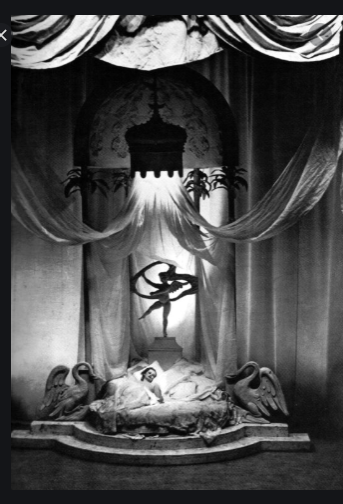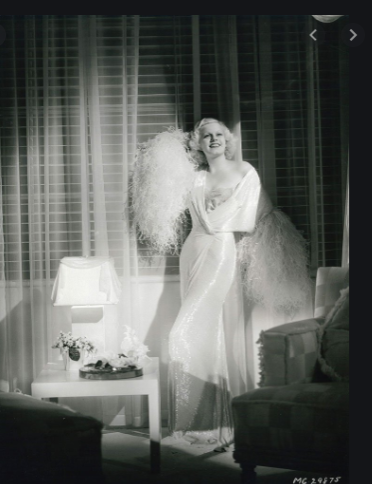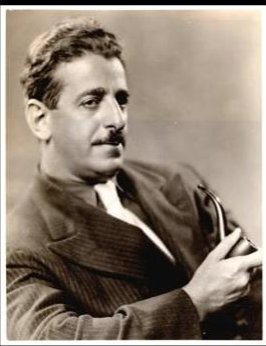
That was the title of the book written by former actor Michael Meyers, so memorable as Ali McGraw’s jock bro in Goodbye, Columbus in 1969.
from wiki:
graduated from Lafayette College in 1968.

That was the title of the book written by former actor Michael Meyers, so memorable as Ali McGraw’s jock bro in Goodbye, Columbus in 1969.
from wiki:
graduated from Lafayette College in 1968.


A silent movie star, who segued into character roles in the talkies, your personal life was more interesting than any performance you ever gave. As Lilyan Tashman, your first wife, was noted to be the chicest women in Hollywood (with the best figure, according to Cecil Beaton), you exuded some pretty serious style yourself, rivaling Adolphe Menjou as Hollywood’s most dapper toff. You shared a Beverly Hills home with her on Linden Drive in what was rumored to be a mariage blanc, as she was a noted, rather aggressive lesbian about whom it was warned, a lady NEVER accompanied her to the powder room. But the fun really happened at your cunning red and white beach house in Santa Monica, decorated by your pal William Haines. After Tash’s tragic early 1934 demise from cancer – perhaps brought on by a lifelong habit of bulimia to stay thin for those bias -cut satins – you were desperate to marry Marian Marsh but settled down with pushy careerist Rita Kauffman, the Fox costume designer who stole the job away from my friend Earl Luick in 1933.
A favorite of Cukor’s, as was Lil, you appeared in his DINNER AT 8 (1933) and then, years later in HELLER IN PINK TIGHTS (1958), with another old Cukor crony, Ramon Novarro.
 Perhaps the most shamefully neglected of all great American actors, he is rarely mentioned, although he took up the mantle of Paul Robeson and helped pave the way for Sidney Poitier, etc. Before he found himself as an actor he worked a myriad of jobs including as a quite successful welterweight boxer who, unfortunately, lost an eye after a particularly savage bout.
Perhaps the most shamefully neglected of all great American actors, he is rarely mentioned, although he took up the mantle of Paul Robeson and helped pave the way for Sidney Poitier, etc. Before he found himself as an actor he worked a myriad of jobs including as a quite successful welterweight boxer who, unfortunately, lost an eye after a particularly savage bout.
It was Orson Welles who made his acting career when he cast him in his legendary all black MACBETH in 1936, in the role of Banquo, and Welles became a lifelong theatrical impetus to Lee, probably most known today for his role in Hitchcock’s queasy LIFEBOAT. He broke all kinds of grounds in the theater: first black actor to play Caliban in THE TEMPEST, first black producer on Broadway with “On Whitman Avenue,” a race play admired by Eleanor Roosevelt, in which he also starred in 1946. In ‘The Duchess of Malfi” that same year, he became the first black actor to play a white role. To change races he used, for the first time onstage, a whitening paste originally devised to conceal burn marks.

Langston Hughes wrote a couple of plays for him that never got produced and I am dying to know what they’re like.

summit of talent
And, this country being – forever – the big ole, stupid, roiling race mess that it has always been and continues to be, he rose to the heights and was brought down during the shameful McCarthy era, like Robeson, whom he refused to name and was blacklisted for it. The stress undoubtedly contributed to the heart attack he died of at the ridiculously young age of 45, in 1952. You can visit him in Woodlawn cemetery – and I dearly hope that someone gets to work on a major play film about this tragic titan, who deserves a fitting tribute far more than anyone I can think of.

Here you are, in the role of Kitty Packard, Manhattan trophy wife, dressed by your fellow birthday boy, Adrian, and surrounded by three gay – if not bisexual – men: the directors George Cukor and Edmund Goulding and your co-star Edmund Lowe, who also shares your natal day today, on the set of “Dinner at Eight.”

It is 1933, your absolute peak as a movie star (the year in which you did two other honeys, “Hold Your Man” and the scintillatingly bawdy satire of your industry, “Bombshell.”) For “Dinner,” MGM gave you the full treatment: you were gleamingly photographed by William Daniels, and art directors Frederick Hope and Hobe Erwin framed you in the most enviable of all movie boudoirs, white on white on white (11 shades in all), inspired by Oliver Messel’s set for “Helen”, produced in London the year before. It helped land you the cover of Time magazine and make you a household name.


Shot in a breathless two weeks, Cukor polished the comic skills you had evinced the year before – after a somewhat torturous histrionic start in films (your “high-toned” socialite in “The Public Enemy” is almost as funny as your Kitty), in Anita Loos’ “screw you”-to- censorship raunchfest, “Red-Headed Woman” (which brought on the Hays Code). Your scenes with Wallace Beery as a Trumplike boorish asshole of a businessmen were hilarious in their savagery, as was your brutal relationship with your snakelike maid, watchfully played by the serpentine Hilda Vaughn.
Few women on film have ever displayed such brazen, take-no-prisoners charisma, for, although you played a selfish, thoughtless, vain, greedy, adulterous arriviste bitch, the entire world fell in love with you.

All this, plus you got one of cinema’s greatest closing scenes, although Marie Dressler got the punchline (an insert by Donald Ogden Stewart, which has now, sadly, been rendered virtually moot by present-day cellphones and sex toys).
 No other Hollywood designer fed the imagination and fantasies of an entire planet as did he. And practically every modern designer from his time on has cited him as a huge influence, while constantly borrowing ideas formulated by him in the MGM wardrobe department and, later, in his own salon, when he left movie work in 1942.
No other Hollywood designer fed the imagination and fantasies of an entire planet as did he. And practically every modern designer from his time on has cited him as a huge influence, while constantly borrowing ideas formulated by him in the MGM wardrobe department and, later, in his own salon, when he left movie work in 1942.
His clothes gave Garbo her mystery, Crawford her brash and bracing American glamour, Shearer her sexiness, Harlow ditto (although she never needed any help in that department), and he transformed Jeanette MacDonald into a beruffled and beribboned human Valentine, most appropriate for the fanciful operettas which shot her to super stardom.

Norma Shearer, ‘Strangers May Kiss’ 1931
His final diva was Julie Andrews who played Guinevere in ‘Camelot’ on Broadway which brought him out of a happy retirement in South Brazil with longtime wife Janet Gaynor, whom he transformed from a little brown wren into an immaculate icon of fashion, and an internationally best-dressed list staple. Sadly, he died of a heart attack at age 58 in 1959, before seeing his last production through to opening night.

Julie Andrews in ‘Camelot’

with Janet Gaynor

a design from CAMELOT for which he was given a posthumous Tony award for best costumes

Garbo, ‘Inspiration’ 1931

Jean Harlow, ‘Dinner at Eight,’ 1933

Jeanette MacDonald (1934)

Joan Crawford in ‘Letty Lynton’ 1932
 Coincidentally born the same day as Marc Blitzstein, who translated his Threepenny Opera, your music will always be essential to any life claiming a modicum of smarts and sophistication. And your range was phenomenal – hard to beleve that the same man could write The Bilbao Song, Surabaya Johnny, September Song, Pirate Jenny, My Ship, That’s Him and that complete ravishment, Speak Low.
Coincidentally born the same day as Marc Blitzstein, who translated his Threepenny Opera, your music will always be essential to any life claiming a modicum of smarts and sophistication. And your range was phenomenal – hard to beleve that the same man could write The Bilbao Song, Surabaya Johnny, September Song, Pirate Jenny, My Ship, That’s Him and that complete ravishment, Speak Low.
I was so lucky to this production …3 times!

He gave the world the revolutionary show THE CRADLE WILL ROCK (1937), his friend Leonard Bernstein lifted a theme from REGINA (1949), his operatic adaptation of THE LITTLE FOXES, which wound up being SOMEWHERE in WEST SIDE STORY, followed by JUNO (1959), inspired by Sean O’Casey’s JUNO AND THE PAYCOCK.


He lived openly as a gay man, but unfortunately this courage was accompanied by self-hatred as he wrote to his sister, “It is absurd to assume there are no sins; there are definitely Cardinal sins — sins against oneself, against one’s law. My sin is, has been… the willingness to corrupt my nature.”

Smallens
His first lover was the conductor Alexander Smallens, traveling to Europe with him in 1924. However, in 1933, he married novelist Eva Gildbeck, whose mother was the Berlin-born opera singer, Lina Arbanell*. The couple was childless, although he dedicated a number of his works to his wife. She died of anorexia in 1936, spurring him to write THE CRADLE WILL ROCK. He also did the adaptaion of THREEPENNY OPERA with Lotte Lenya which enjoyed a long run at what is now the Lucille Lortel theater on Christopher Street. He and his wife were longtime residents of the West Village.

While vacationing in Martinique in 1964, Blitzstein, 58, was murdered by three sailors he had picked up in a bar, one of whom he was said to have propositioned, and left naked and dead, in an alley. A letter from Bernstein’s archive from him states: ““Marc is dead, & I’ve lost an arm. Felicia [Mrs. Bernstein] can’t stop crying.”
He is buried at Chelton Hills Cemetery in Phildelphia.
*Arbanell was a real stage star, credited with bringing the Viennese style of performance to operetta in America, THE MERRY WDOW being one of her most popular roles. She was pictured on the sheet music for the song Every Little Movement, which she popularized. After her husband died in 1934, she retired from singing but became a powerful casting director, with credits including I Married an Angel, Street Scene, the world tour of Porgy and Bess in the early 1950s, and the film version of Carmen Jones, as well as Blitzstein’s Regina and Juno when she was in her 80s, working until she died in 1963
Marc Blitzstein and Abarbanell remained close friends long after Eva, Blitzstein’s wife and Abarbanell’s daughter, died in 1936. Abarbanell cast Blitzstein’s opera Regina in 1949 and his musical Juno in 1959, when she had already passed the age of eighty.
Lina Abarbanell continued working in the theater almost until the day she died, on January 6, 1963.
Blitzstein’s horrific end has – like every gay murder – obsessed me my whole life. The best account is from the book, Marc Blitzstein: His Life, His Work, His World, by Howard Pollack: